Morocco is a treasure trove of diverse experiences, boasting UNESCO World Heritage-listed cities, modern metropoles, arid deserts, snowy peaks, and stunning coastlines along the Atlantic and Mediterranean.
This North African country offers a unique blend of cultures, with influences from Berber, Arab, European, and African traditions, making it a fascinating destination for travelers.
From historic cities to beach havens and mountain retreats, Morocco has something for every kind of traveler, whether you’re a history buff, an adventure seeker, or simply looking for a relaxing getaway.
Key Takeaways
- Morocco offers a diverse range of destinations catering to different interests.
- The country’s rich cultural heritage is reflected in its historic cities.
- Morocco’s varied geography allows for different landscapes and climates.
- Each city has its unique character, architecture, and cultural experiences.
- Travelers can choose from imperial cities, coastal havens, and mountain retreats.
- Morocco’s strategic location has made it a crossroads of civilizations.
Discovering Morocco’s Diverse Destinations
From the majestic Atlas Mountains to the vast Sahara Desert, Morocco’s landscapes are as varied as they are breathtaking. The country’s geographical diversity is astounding, featuring towering mountains, vast deserts, and extensive coastlines along both the Atlantic Ocean and Mediterranean Sea.
The Varied Landscapes of Morocco
Morocco’s varied landscapes create distinct microclimates, allowing travelers to experience a range of activities within a relatively short distance. For instance, one can ski in the Atlas Mountains and sunbathe on the beaches during certain seasons.
From Mountains to Deserts to Coastlines
The diversity of Morocco is reflected in its cities, with coastal cities like Essaouira offering laid-back beach vibes, while desert cities like Merzouga provide gateways to Sahara adventures. Modern transportation infrastructure, including domestic flights, high-speed rail, and luxury coaches, makes traveling between these diverse destinations increasingly convenient.
Each region of Morocco offers unique cultural experiences, from Berber villages in the Atlas Mountains to Arab-influenced imperial cities and multicultural coastal towns. First-time visitors are advised to focus on 2-3 regions rather than attempting to see the entire country in one trip.
| Region | Key Attractions | Experiences |
|---|---|---|
| Atlas Mountains | Berber villages, mountain scenery | Hiking, skiing |
| Sahara Desert | Dunes, desert landscapes | Camel rides, stargazing |
| Coastal Areas | Beaches, coastal towns | Surfing, seafood |
Morocco’s tourism infrastructure continues to develop, with new accommodations ranging from luxury desert camps to boutique riads in historic medinas. This diversity makes Morocco an ideal destination for travelers seeking varied landscapes and cultural experiences.
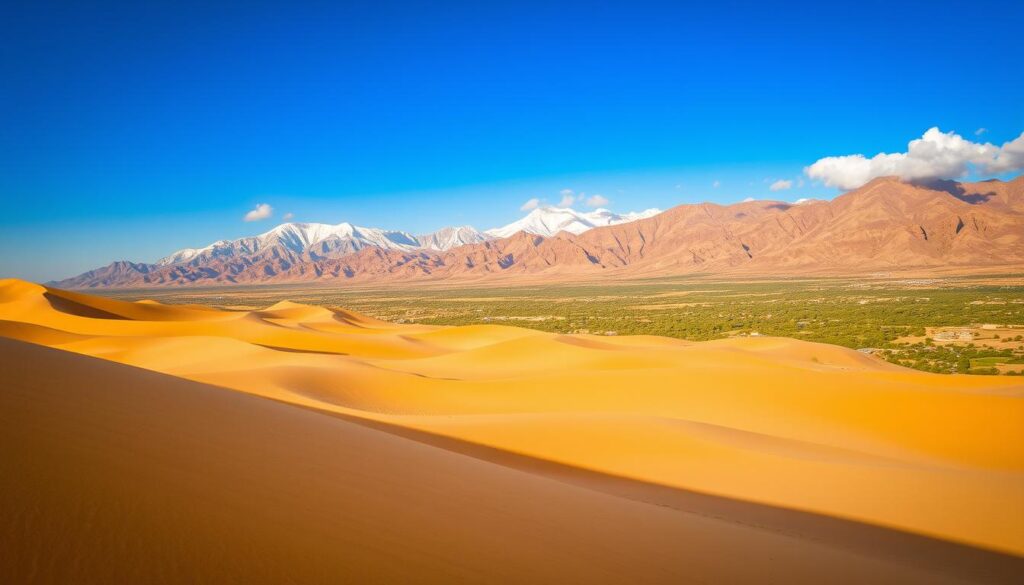
Marrakech: The Vibrant Heart of Morocco
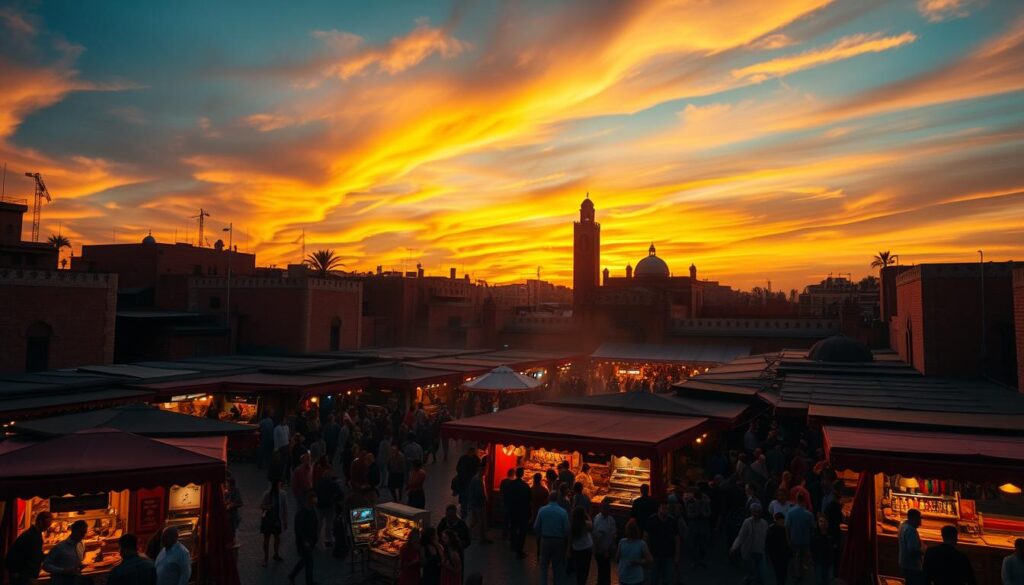
Marrakech, the Red City, is a treasure trove of experiences, from its bustling markets to its serene gardens. This vibrant city is a must-visit destination in Morocco, offering a unique blend of traditional and modern attractions.
Exploring Marrakech’s Medina and Beyond
The city’s medina, a UNESCO World Heritage site, is a labyrinth of narrow alleys housing various souks or markets. Here, visitors can find everything from spices and textiles to metalwork and leather goods. The medina comes alive in the evening with the sounds of storytellers, musicians, and snake charmers in Djemaa el Fna square.
Navigating the Red City’s Attractions
Marrakech is filled with things to do and see. Visitors can explore the serene Jardin Majorelle, once owned by Yves Saint Laurent, and the opulent Bahia Palace. The historic Koutoubia Mosque with its iconic minaret is another must-visit place. The city’s culinary scene is also exceptional, ranging from street food in the medina to high-end restaurants serving refined Moroccan cuisine.
The city serves as an excellent base for day trips to the Atlas Mountains, allowing visitors to experience both urban energy and natural beauty. Despite its popularity with tourists, Marrakech maintains an authentic character where visitors can witness everyday life unfolding alongside tourist activities. The people of Marrakech add to the city’s charm, making it a truly unforgettable city experience.
As the cultural and commercial hub of Morocco, Marrakech is typically the first stop for many visitors. The city’s medina is its heart, pulsating with energy and activity. Whether you’re looking to immerse yourself in local culture or simply enjoy the vibrant atmosphere, Marrakech has something for everyone.
Fez: Step Back in Time in Morocco’s Cultural Capital

Fez is a city where time stands still, preserving the essence of Morocco’s rich heritage. As the oldest city in Morocco, Fez proudly keeps one foot firmly planted in the past. Its crumbling medieval medina is vast, and it’s almost guaranteed that you will get lost wiggling your way through a maze of workshops, apothecaries, and market stalls.
Navigating the Ancient Medina of Fez
The medina of Fez, known as Fes el-Bali, is considered the world’s largest car-free urban area and contains over 9,000 narrow streets and alleys that form a complex maze where getting lost is part of the experience. Visitors can explore the UNESCO-protected medina, which dates back to the 9th century, offering the most authentic medieval urban experience in the Arab world.
Experiencing Traditional Crafts and Education
Fez is home to the University of Al-Qarawiyyin, founded in 859 CE and recognized by UNESCO as the oldest continuously operating educational institution in the world. The city remains Morocco’s artisanal center, where traditional crafts like pottery, metalwork, and leather tanning are still practiced using centuries-old techniques, particularly at the famous Chouara Tannery.
The city’s architecture showcases exquisite examples of Islamic design, including intricately carved wooden doors, colorful zellige tilework, and ornate mosques and madrasas (Islamic schools). Fez’s culinary traditions are considered among the finest in Morocco, with local specialties including pastilla (savory-sweet meat pie) and various tagines unique to the region.
Unlike more tourist-oriented Moroccan cities, Fez maintains a deeply authentic atmosphere where visitors can witness traditional Moroccan life continuing much as it has for centuries. The city’s strategic location in northern Morocco makes it an excellent base for day trips to the Roman ruins of Volubilis and the holy town of Moulay Idriss.
Chefchaouen: Morocco’s Enchanting Blue City

Nestled in the heart of Morocco’s Rif Mountains, Chefchaouen is a town that will captivate your senses. Even before visiting, many have preconceived notions that Chaouen is nothing more than blue alleyways and cute houses for people to snap their Instagram photos.
The Blue Pearl of the Rif Mountains
The city of Chefchaouen is instantly recognizable for its striking blue-washed buildings that create a dreamlike atmosphere unlike anywhere else in the world. The distinctive blue color scheme dates back to the 15th century when Jewish refugees fleeing the Spanish Inquisition settled here and painted buildings blue to reflect the sky and remind them of God.
What was expected to be a quick two-day stop turned into a five days detour, alternating between aimlessly wandering through the charming medina and hiking amongst otherworldly landscapes. The compact medina is relatively easy to navigate compared to those in Fez or Marrakech, making it an ideal place for leisurely exploration.
Photography and Relaxation in Chefchaouen
Beyond its photogenic streets, Chefchaouen offers a relaxed, laid-back atmosphere that provides a welcome contrast to the hectic energy of Morocco’s larger city. The town attracts a diverse mix of visitors, from photographers capturing its picturesque streets to nature lovers exploring the nearby mountains and travelers seeking a more relaxed Moroccan experience.
Local artisans produce distinctive handicrafts, including woolen garments and blankets woven with patterns unique to the region. Many travelers plan a short visit to Chefchaouen but end up extending their stay, captivated by the city’s enchanting atmosphere and the slower pace of life in this mountain retreat.
Essaouira: The Perfect Blend of Beach and Culture
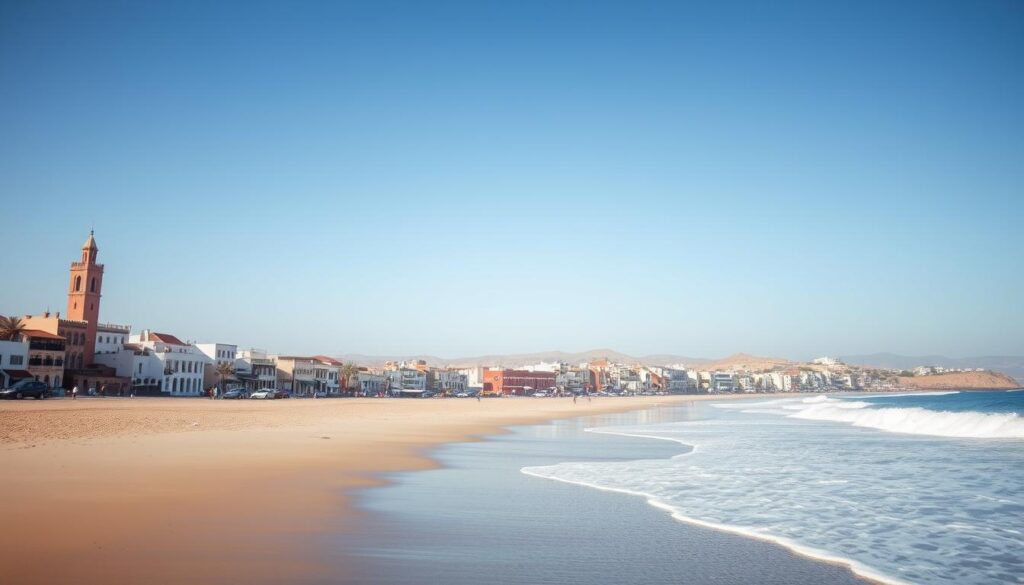
Essaouira’s charm lies in its perfect blend of a relaxed beach town atmosphere and a rich cultural scene. This city on Morocco’s Atlantic coast is known for its sandy beach, watersport centers, and a working fishing port that offers fresh seafood.
Coastal Charm and Creative Energy
The historic heart of Essaouira is its pedestrianized medina, a UNESCO World Heritage site, filled with markets selling ceramics and traditional riads. The city’s annual Gnaoua World Music Festival and numerous galleries add to its creative vibe.
Wind, Waves, and Walled Medina
Essaouira is nicknamed the “Wind City of Africa” due to its consistent strong winds, making it ideal for surfing and kitesurfing. The 18th-century fortified walls offer spectacular views of the Atlantic Ocean.
The town‘s relaxed atmosphere and artistic heritage make it an attractive destination for those seeking a mix of beach activities and cultural experiences. Visitors can enjoy the local life by exploring the medina’s grid-like layout, shopping at fixed-price boutiques, and savoring fresh seafood at seaside restaurants.
Essaouira’s beaches are perfect for relaxation, and its cultural events, like the Gnaoua World Music Festival, attract visitors from around the world.
The Best City to Visit in Morocco for Desert Adventures: Merzouga
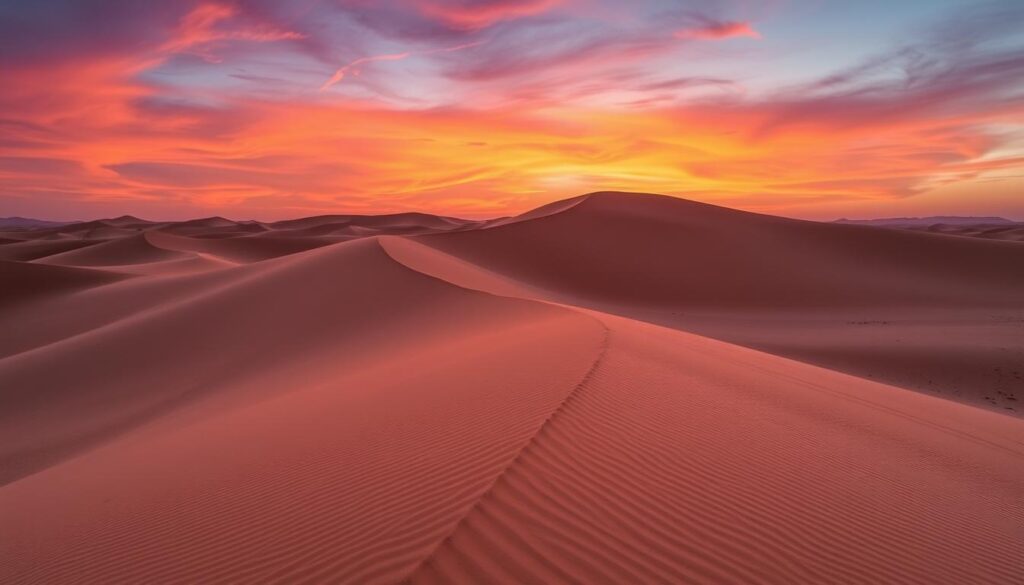
The Sahara Desert’s golden dunes await in Merzouga, a small desert town that’s the gateway to Morocco’s portion of the world’s largest hot desert. Merzouga is renowned for its proximity to the spectacular Erg Chebbi dunes, which rise dramatically to heights of up to 150 meters.
Gateway to the Sahara’s Golden Dunes
Merzouga serves as the premier launching point for camel treks across the golden sand dunes to spend a night in a Berber camp. The journey to Merzouga from major cities like Marrakech or Fez is long but rewarding, taking travelers through diverse landscapes including the Atlas Mountains, palm-filled oases, and dramatic gorges.
Camel Treks and Desert Camping
Visitors to Merzouga can experience traditional Berber hospitality, enjoying mint tea, traditional music around campfires, and sleeping under the stars in desert camps ranging from basic to luxurious. The Sahara Desert around Merzouga offers some of the clearest night skies in the world, making it an exceptional location for stargazing and astrophotography.
Beyond camel trekking, adventure seekers can try sandboarding down the dunes, 4×4 excursions deeper into the desert, or quad biking across the sandy terrain. The area is also home to unique desert wildlife and the seasonal Dayet Srji salt lake, which attracts flamingos and other migratory birds after rainfall.
For those seeking the iconic Sahara Desert experience that appears in travel photographs of Morocco, Merzouga’s Erg Chebbi dunes offer the most accessible and spectacular desert landscape in the country. Whether you choose to travel by 4WD or camel, the emptiness of the Sahara can bring a sense of remoteness that’s rare to experience these days.
Casablanca: Morocco’s Modern Metropolis

As Morocco’s economic capital, Casablanca offers a distinct perspective on the country’s contemporary culture. This city is a fascinating blend of modern architecture, bustling business districts, and a cosmopolitan atmosphere, making it an ideal place to visit Morocco and experience its modern face.
Contemporary Morocco and Architectural Marvels
The city’s crown jewel is the magnificent Hassan II Mosque, one of the largest mosques in the world and the only one in Morocco that non-Muslims can enter on guided tours. Its breathtaking craftsmanship and unique location, partially built over the Atlantic Ocean, make it a must-see attraction.
Beyond the Humphrey Bogart Film
Casablanca is not just about the famous film; it’s a thriving port city with a rich history, Art Deco buildings, and contemporary shopping malls. Visitors can enjoy a leisurely day exploring the Corniche waterfront area, with its pleasant seaside promenades and seafood restaurants. Whether you’re on a trip to Morocco or just passing through, Casablanca is worth a visit to appreciate its unique blend of traditional and modern elements.
Rabat: The Elegant Capital City
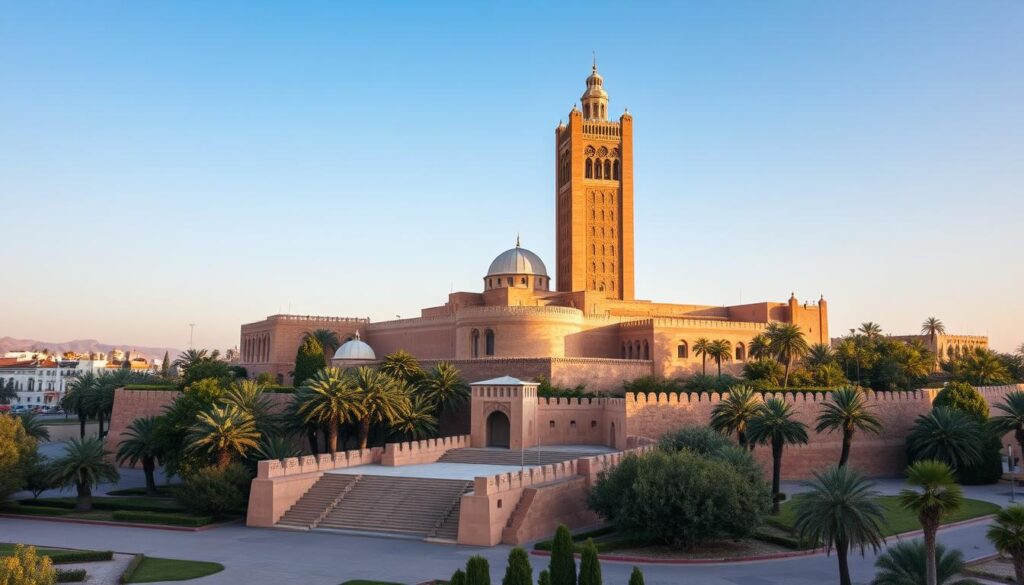
Morocco’s capital, Rabat, is a city that seamlessly blends history, culture, and relaxation. As the country’s administrative hub, it offers a unique experience for visitors.
Morocco’s Administrative and Cultural Center
Rabat, Morocco’s capital city, provides a more relaxed and orderly experience compared to other major Moroccan cities. The city’s clean streets, manicured gardens, and blend of traditional and colonial architecture make it an attractive destination.
Historical Sites and Modern Governance
The city’s most iconic landmark is the Hassan Tower, an incomplete 12th-century minaret that stands alongside the Mausoleum of Mohammed V, creating one of Morocco’s most important historical complexes. Visitors can explore the compact medina, which is less overwhelming than those in Fez or Marrakech, making it ideal for experiencing a traditional Moroccan market.
The picturesque Kasbah of the Udayas offers stunning views over the Bou Regreg river and Atlantic Ocean. As Morocco’s administrative capital, Rabat has a more cosmopolitan feel, with diplomats, government officials, and international residents contributing to its sophisticated atmosphere.
Visitors can enjoy a day out in Rabat by exploring its historical sites, relaxing on its beautiful beaches, and experiencing the local culture. Whether you’re looking to visit Morocco‘s rich history or simply enjoy the city’s pleasant climate, Rabat is an excellent choice for your next destination.
Hidden Gems: Aït Ben Haddou, Ifrane, and Tangier
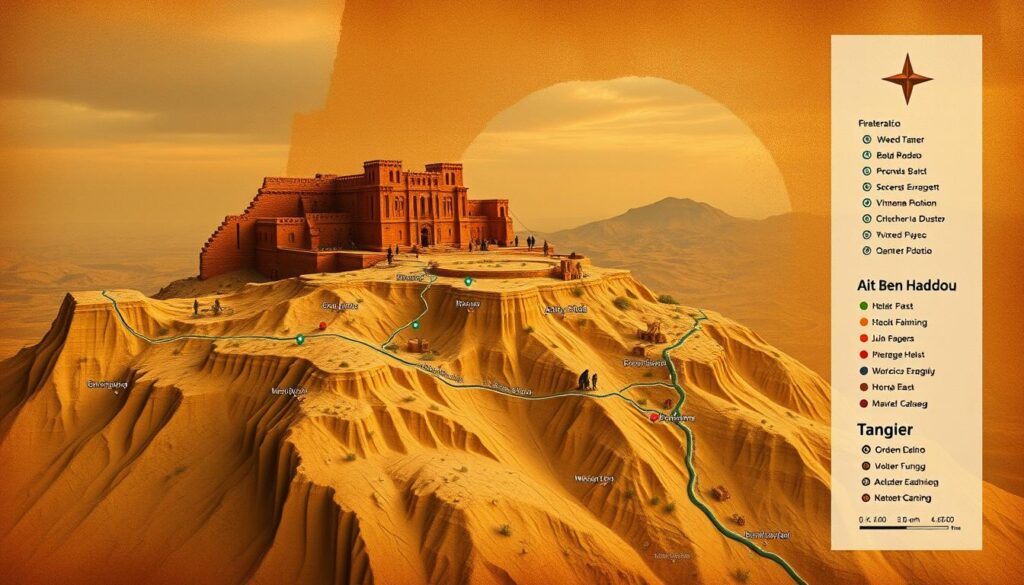
Off-the-Beaten-Path Moroccan Destinations
Venturing off the beaten path in Morocco reveals a treasure trove of unique experiences and destinations. Morocco’s diverse landscapes and cultures are showcased in its lesser-visited towns and cities, offering a different perspective on this fascinating country.
From Desert Kasbahs to Mediterranean Ports
Aït Ben Haddou is a spectacular fortified place made of earthen clay buildings that has served as a backdrop for numerous films and TV shows, including Game of Thrones and Gladiator. This visit to a traditional Berber village offers insight into the region’s rich history and architecture.
Ifrane, nicknamed “Little Switzerland,” surprises visitors with its Alpine-style architecture and cool mountain climate, providing a stark contrast to Morocco’s desert regions. The town features beautiful parks and a national forest home to endangered Barbary macaques.
Tangier, once an international zone, has transformed into a vibrant Mediterranean port city with a unique blend of European and Moroccan influences. The city’s strategic location offers spectacular coastal views and a fascinating history as a crossroads between Europe and Africa.
These destinations are increasingly accessible thanks to improved transportation infrastructure, yet they retain an authentic character that offers visitors a different perspective on Morocco beyond its major tourist centers. Whether you’re exploring the Atlas Mountains around Ifrane, the desert landscapes surrounding Aït Ben Haddou, or the beaches near Tangier, Morocco has a wealth of places to visit on your trip.
Choosing Your Perfect Moroccan Destination
From vibrant cities to serene landscapes, Morocco has something to offer every kind of traveler. As you plan your trip to this diverse country, consider what places align best with your travel interests.
Tailoring Your Moroccan Experience
When deciding on the best city to visit in Morocco, think about your primary travel goals. History enthusiasts may prioritize Fez and Meknes, while those seeking beach relaxation might prefer Essaouira or Tangier. For adventure seekers, Merzouga and the Atlas Mountains offer exciting opportunities.
Planning Your Moroccan Adventure
Consider combining destinations to experience Morocco’s full diversity. For instance, pair visits to imperial cities with beach time or mountain trekking with desert adventures. With various options available, including trains, buses, and domestic flights, travelers can easily navigate between cities. Whatever places you choose, leave room for spontaneity – Morocco’s charm often lies in unexpected discoveries.